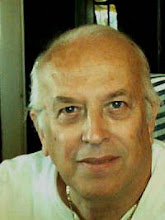 The Star of South Africa, a 47.69-carat old style pear-shaped diamond, was cut from a crystal of 83.50 carats, and is credited with being the diamond that started the diamond rush and turned the tides of fortune in South Africa.
The Star of South Africa, a 47.69-carat old style pear-shaped diamond, was cut from a crystal of 83.50 carats, and is credited with being the diamond that started the diamond rush and turned the tides of fortune in South Africa.In 1869, it was picked up by a shepherd boy on the Zandfontein Farm near the Orange River. Schalk van Niekerk, a young farmer who three years earlier had had a stroke of luck with a "pebble" that proved to be a 21.25-carat diamond (the Eureka Diamond), traded the young native for the stone, giving him five hundred sheep, ten oxen, and a horse. It was practically all of Niekerk's possessions, but a few days later in Hopetown he sold the rough crystal for $56,000.
Later, the stone was purchased by Louis Hond, a diamond cutter, and fashioned to what was described as an "oval, three-sided brilliant" and was sold to the Earl of Dudley for $125,000 (or about £25,000). The Countess Dudley wore it as a hair ornament, surrounded by 95 smaller diamonds.
The diamond now resides in the Natural History Museum in London and is part of their permanent collection, donated to them by a private collector who bought it in 1973 in Geneva for FS 1.6 million ($225,300).

No comments:
Post a Comment